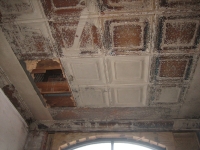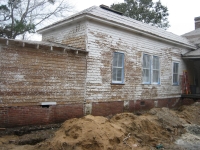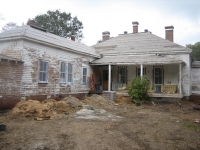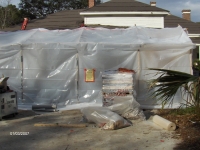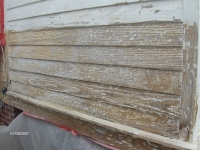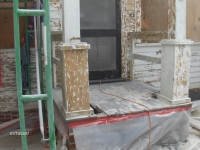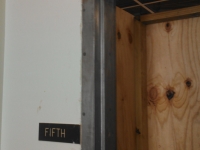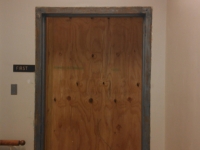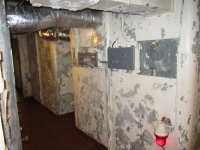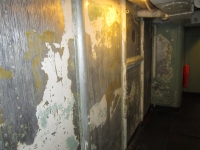Lead has long been recognized as a harmful environmental pollutant. Most homes built before 1960 contain heavily leaded paint. Some homes built as recently as 1978 may also contain lead paint. This paint could be on window frames, walls, the outside of homes, or other surfaces. Harmful exposures to lead can be created when lead-based paint is improperly removed from surfaces by dry scraping, sanding, or open-flame burning. High concentrations of airborne lead particles in homes can also result from lead dust from outdoor sources, including contaminated soil tracked inside, and use of lead in certain indoor activities such as soldering and stained glass-making. There are many ways in which humans are exposed to lead: through air, drinking water, food, contaminated soil, deteriorating paint, and dust. Airborne lead enters the body when an individual breathes or swallows lead particles or dust once it has settled. Before it was known how harmful lead could be, it was used in paint, gasoline, water pipes, and many other products.
Lead affects practically all systems within the body. At high levels it can cause:
- Convulsions
- Coma
- Death
Lower levels of lead can adversely affect:
- The Brain
- Central nervous system
- Blood Cells
- Kidneys
The effects of lead exposure on fetuses and young children can be severe. They include:
- Delays in physical and mental development
- Lower IQ levels
- Shortened attention spans
- Increased behavioral problems
Fetuses, infants, and children are more vulnerable to lead exposure than adults since lead is more easily absorbed into growing bodies, and the tissues of small children are more sensitive to the damaging effects of lead. Children may have higher exposures since they are more likely to get lead dust on their hands and then put their fingers or other lead contaminated objects into their mouth.
Rhino has been working on Lead projects for over 20 years and provides expert services in removing lead based paint safely. We are aware of the health hazards and use lead-safe work practices to control any airborne dust. ALL Rhino employees are certified renovators and EPA-approved training providers. EPA issued the Renovation, Repair, and Painting Rule on April 22, 2008, where any project that disturbs lead-based paint MUST have certified renovators do the removal.
You will need to contact an Industrial Hygienist (I.H.) who will come to your home to take some samples and evaluate if you have Lead Paint and they will complete a report. This report will indicate if you have Lead, where and how much. After you have this report, please call Rhino and we will set up an appointment to come to your home. We will need to have a copy of the report. From this point, we will be able to review the quantities and be able to provide you with a quote, usually within 24-48 hours. You must have the Lead report before Rhino can provide you a proposal with the quote.
The homeowner, building owner, or General Contractor (whoever is requesting the survey).
Yes, DO NOT attempt to remove yourself. Individuals have been poisoned by scraping and/or sanding lead based paint, because these activities generate large amounts of lead dust when removed improper. All of our employees possess special training to remove lead based paint safely and securely.


